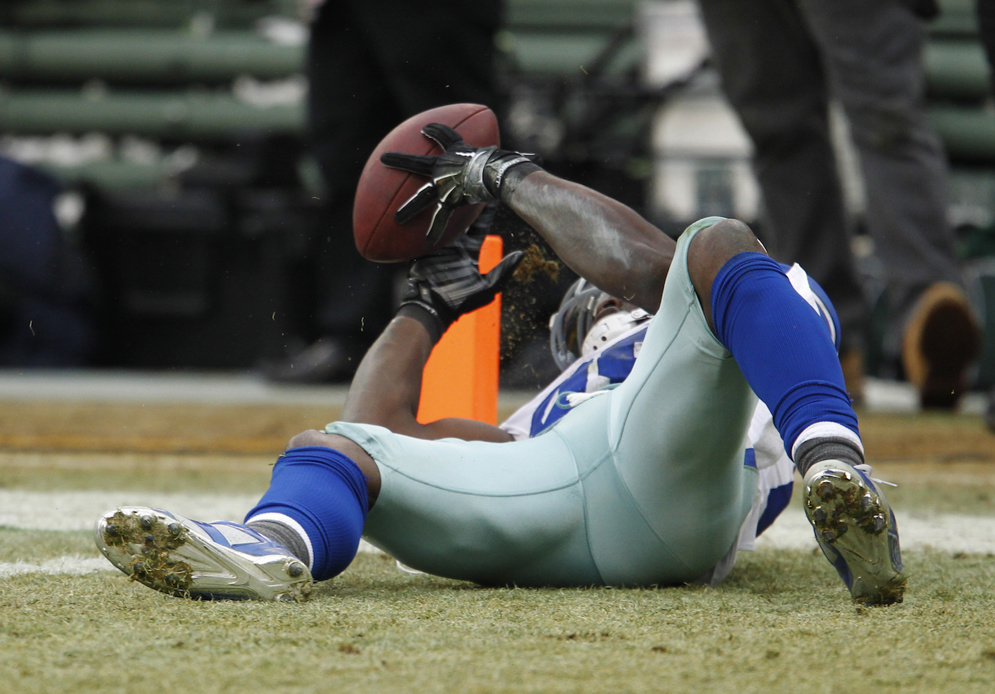Dean Blandino Clarifies the Catch Rule
The controversial ruling in last season’s playoff game between the Dallas Cowboys and the Green Bay Packers has led to a clarification of the NFL’s rule defining a catch to convey more clearly the element of time required for completion of a catch.
At this week’s NFL annual meeting in Phoenix, NFL Vice President of Officiating Dean Blandino announced the Competition Committee’s revision of the language describing what constitutes a catch.
There are three requirements. The receiver must:
- Have firm grip and control of the ball; and
- Have both feet or some part of his body, other than hands or feet, on the ground; and
- Maintain control of the ball for an element of time after the first two requirements have been fulfilled.
The new language specifies that for a catch to be considered complete, either the player must establish himself as a runner or, if he goes to the ground in the act of catching a pass before establishing himself as a runner, he must retain control of the ball when he contacts the ground.
“If he can clearly establish himself as a runner, then he’s not going to the ground to make the catch,” Blandino said. “If he hasn’t clearly established himself as a runner prior to going to the ground, then he has to hold on to the ball until after his initial contact with the ground.”
The new language wouldn’t change the ruling in the Dallas-Green Bay game, made after instant replay review, that a catch that appeared to have been made by Cowboys receiver Dez Bryant was actually an incomplete pass. Discussing that ruling during the news conference, Blandino said: “Bryant is going to the ground, he’s falling to the ground to make the catch. He has not clearly established himself as a runner prior to going to the ground, so he has to hold onto the ball until after that initial contact with the ground. If the ball touches the ground and comes loose, it’s an incomplete pass. You’ll see the ball hit the ground, and then it pops loose.”

The new language clarifies the ruling in the Dallas-Green Bay game, made after instant replay review, that a catch that Cowboys receiver Dez Bryant appeared to make was correctly ruled an incomplete pass.
See Blandino’s remarks from the annual meeting.
“The committee looked at the language and made several changes. In order to complete a catch, the receiver has to have control, both feet on the ground, and he has to have it after that long enough to clearly establish himself as a runner,” Blandino said. “This would fall directly in line with our defenseless player rule, where we say a receiver is protected until he can clearly establish himself as a runner. And what does that mean? That means he has the ability to ward off and protect himself from the impending contact.”
Contact with the ground can cause an incomplete pass for the same reason that contact with an opponent can cause an incomplete pass: The ball is dislodged from the receiver’s grasp before he has completed the time requirement for a catch.
Consistent with its comments on the same issue in 2010, the Competition Committee noted: “The Committee wants to emphasize that playing rules are written to be officiated on the field. The rules regarding a catch are often scrutinized with the benefit of replay or slow motion, and the review may be inconsistent with officiating the play at full speed in live action. Instant Replay should only reverse an incorrect call on the basis of ‘indisputable visual evidence.’”
“If you’re going to the ground, hang on to the ball. It’s really pretty simple,” said Jeff Fisher, St. Louis Rams head coach and Competition Committee co-chairman.
